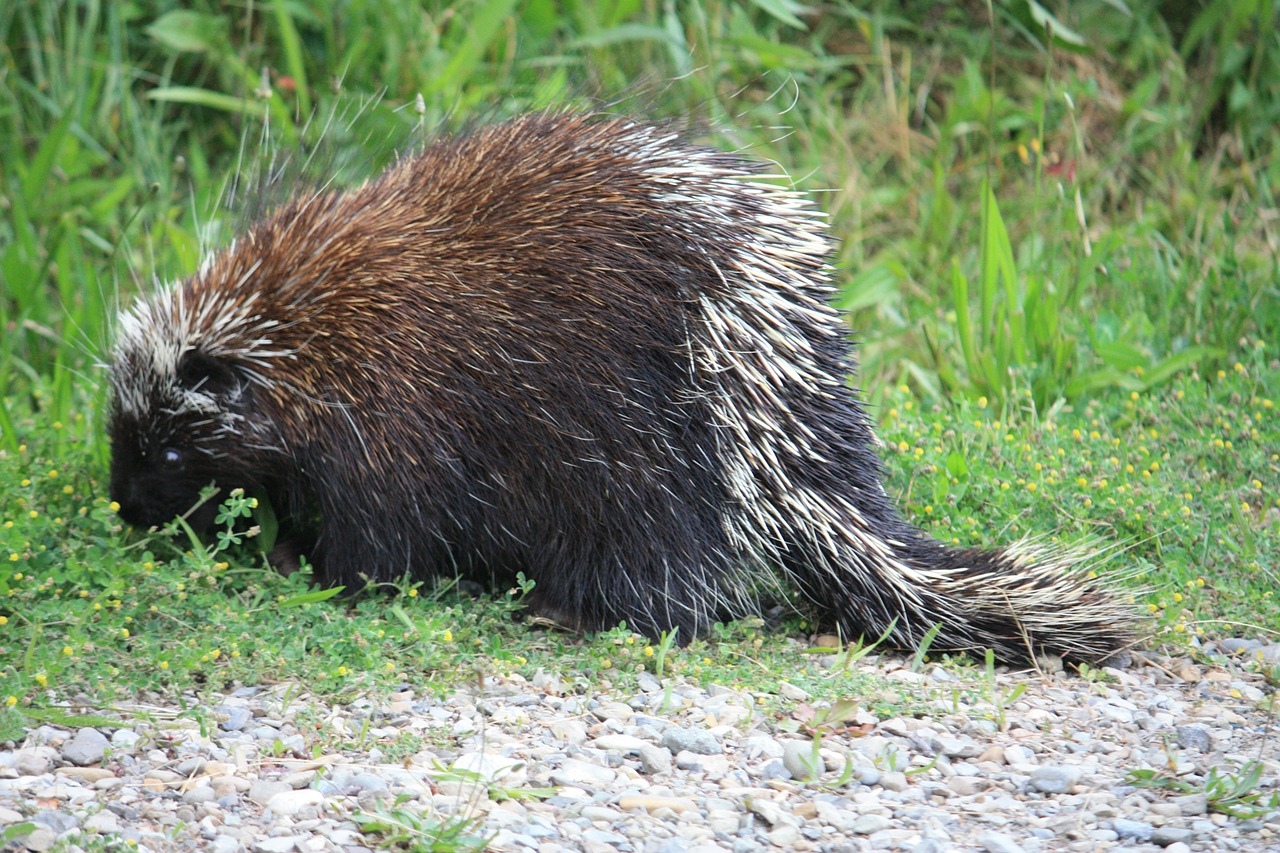Scientific classification: Eurasian porcupines make up the family Hystricidae. American porcupines make up the family Erethizontidae. The common porcupine is classified as Hystrix cristata.
Introduction
Porcupine are herbivorous rodent having long, pointed spines, or quills, growing from the back and sides and, in some species, from the head and tail. The quills, which have needle-sharp ends containing hundreds of barbs, can be erected by the muscles of the skin. Their loose attachment and ready removal have given rise to the popular but incorrect idea that the animal can project its quills like arrows or darts.
Habitat
The Eurasian porcupines range through the forests of southern Europe and Asia, Africa, and Indonesia. They are typified by the common porcupine, which is thick-bodied, grizzled, and black in color. It grows to a length of at least 60 cm (at least 24 in), with some of its quills exceeding 30 cm (12 in) in length. The American porcupines include four genera: the tree porcupines of Central and South America, the North American porcupine, baby gerbils the thin-spined porcupine of Brazil, and the Amazonian porcupine. The North American porcupine is found in heavily wooded regions from Alaska to the northern extreme of Mexico. It grows to a length of 65 to 80 cm (26 to 31 in) and has a short tail and brownish hair, which almost conceals its 5- to 15-cm (2- to 6-in) quills.
Different Species of porcupines
Prehensile-Tailed Porcupine
Native to Mexico and northern South America, this tree porcupine is identified by a strong, grasping tail that provides stability while the animal gathers food. The prehensile-tailed porcupine’s diet consists of leaves, fruits, and stems. The porcupine’s sharp quills defend it against predators.
Canadian Porcupine
The Canadian or North American porcupine, Erethizon dorsatum, like other New World porcupines, spends some of its time in the trees. Its strong claws and creased, furless foot pads grip branches well, and its spineless tail, prehensile in some New World species, baby gerbils is also useful in climbing. In contrast, Old World porcupines are completely terrestrial. North American porcupines subsist mostly on bark, needles, and (during the summer) grasses. The one pictured here is chewing on an elk antler.
North American Porcupine
After tectonic events raised the land bridge of Central America, a great interchange of animals took place between the previously isolated continents to the north and south. Some of the families that traveled south were the cats, dogs, raccoons, deer, and camels, represented by today’s jaguars and ocelots, maned wolves and bushdogs, coatis and kinkajous, baby gerbils pudus and brockets, and vicuñas and guanacos (and their domesticated descendants, the llamas and alpacas). From the south came creatures belonging to the families of opossums, sloths, armadillos, agoutis, and porcupines. Of all descendants of the southerners, the North American porcupine, Erethizon dorsatum, has made the greatest inroads. This bark-eating rodent, with its formidable barbed quills, today ranges as far north as Alaska and Canada’s Hudson Bay and Labrador.

